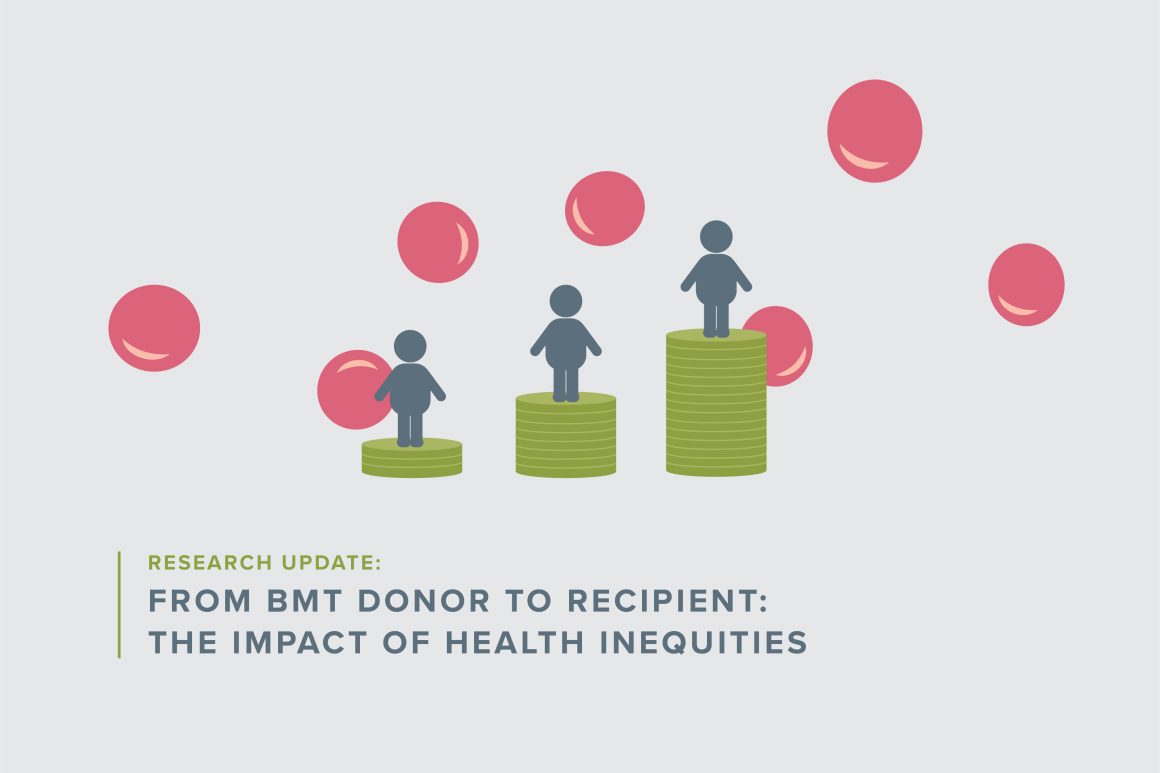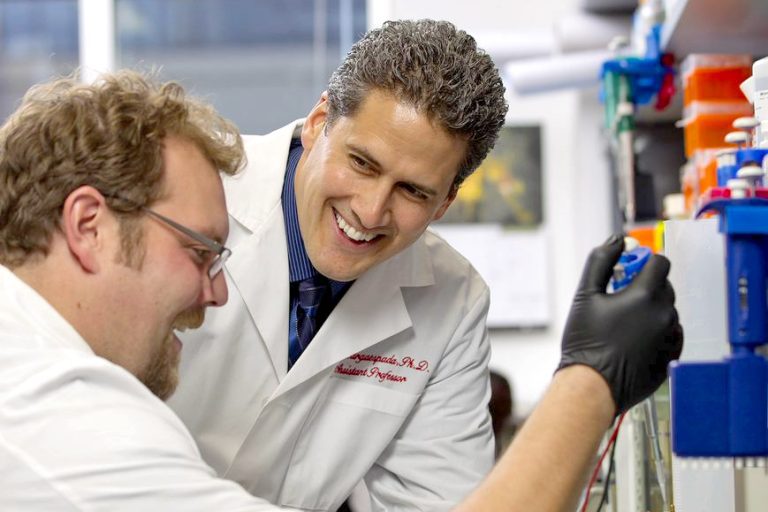Our life experiences can affect our bodies on the stem cell level — even when our cells are implanted in an entirely different human.
That’s what Lucie Turcotte, MD, MPH, MS discovered while examining the impact of donors’ socioeconomic status on bone marrow transplant (BMT) outcomes. She recently presented her findings at the 2021 American Society of Hematology annual meeting.
“This all stemmed from a pilot grant from Children’s Cancer Research Fund several years ago,” said Turcotte, a pediatric hematologist and oncologist at the University of Minnesota Masonic Children’s Hospital and an associate professor at the University of Minnesota Medical School. “These grants are so important and allow researchers to initiate these exciting but high risk, high reward research projects that are not quite ready for a National Institutes of Health grant but could turn into one with the necessary pilot data. Particularly when I was a junior faculty member, these were instrumental in establishing larger grants down the road.”
Improving life for cancer survivors
Turcotte first got interested in cancer survivorship during her residency at Seattle Children’s Hospital. “I remember being a little bit horrified by all the toxicities that these kids experience during their therapies,” she said. “I wondered: What happens to these children when they’re done with this? Are they OK? It was really my interest in survivorship that got me interested in pediatric oncology. I started focusing on how to help them.”
She credits two of her early mentors, Drs. Julie Ross and Mike Verneris at the University of Minnesota, for inspiring this path of research. “They encouraged me to think about projects that were interesting but outside of the box,” she recalled. “Bone marrow transplants work by taking immune cells from a donor and infusing them into the recipient, where they hone into the bone marrow of the recipient and become their new immune system. I remember asking: What if the donor has underlying inflammation? What happens if the donor is obese? How do those things affect survival, relapse risk, and graft versus host disease?”
With funding support from Children’s Cancer Research Fund (CCRF), Turcotte followed her curiosity and found that donor obesity didn’t seem to matter, but inflammatory status might. To build on those findings, she partnered with Jennifer Knight, MD, MS at the Medical College of Wisconsin, who had previously found that BMT recipients with lower socioeconomic status had a higher risk of mortality, regardless of race, insurance or access to care. Turcotte and Knight decided to pursue a new question:
What happens when a BMT donor comes from a financially disadvantaged background?
With a grant from the National Institutes of Health, they delved into the data on more than 2,000 unrelated donor-recipient pairs nationwide using data from the Center for International Blood and Marrow Transplantation Research, classifying socioeconomic status using donors’ zip codes and U.S. Census data on household income, housing, employment and other factors. Then they studied recipients’ outcomes after transplant, including survival, disease relapse, and graft versus host disease.
“Low and behold, when someone receives stem cells from a donor who has greater socioeconomic disadvantage, they have worse survival, and they have higher risk of early transplant-related mortality,” Turcotte explained. “And that’s pretty striking. It’s really striking because it tells you that something that happens in that donor’s cells persists down to the stem cell level even when engrafting and dividing in a new person.”
In fact, the donors’ socioeconomic status had an even bigger impact on outcomes than the recipients’ own socioeconomic status prior to transplant.
While the research focused on adult donors and recipients, the findings could be significant for pediatric patients as well. But the takeaway isn’t to avoid using donors with lower incomes and socioeconomic status, Turcotte emphasized.
“The message is that this is an important public health issue. This is about the way that our socioeconomic wellbeing can impact our health,” she said. “It really speaks to the needs for broader public health prevention and intervention to lift everyone up.”
Turning insights into solutions
Of course, tackling health inequities is a large-scale, long-term problem. But this discovery could still inform treatment strategies in the meantime. “The next steps are investigating why it’s happening. Is it because of gene expression changes? Or other biologic alterations? We hope as we’re doing these studies in the lab, we’ll be able to shed more light on what is happening,” she said. “Depending on what’s driving these findings, there are possible ways we can modify donors’ cells. Ideally, we could enhance the health of donors before transplant.”
A donor’s socioeconomic status could also be a factor for oncologists to consider when planning a transplant recipient’s care. “If we know there is something that could make their outcome worse, we can be more vigilant about things like supportive care after transplant,” Turcotte explained.
Next, she hopes to explore the same topic in children using data from a large cohort of pediatric patients, potentially as early as next year.
And Turcotte is excited to continue looking for fresh research questions to explore and new ways to improve survivors’ lives. “For me, it’s the patients who really drive the ideas and drive the research,” she said. “It’s 100% about the patients.”
Support Groundbreaking Research
Your support propels bold ideas forward and empowers researchers to discover treatments that are better and safer for kids, and ensure every child can have a long, healthy life after cancer.




